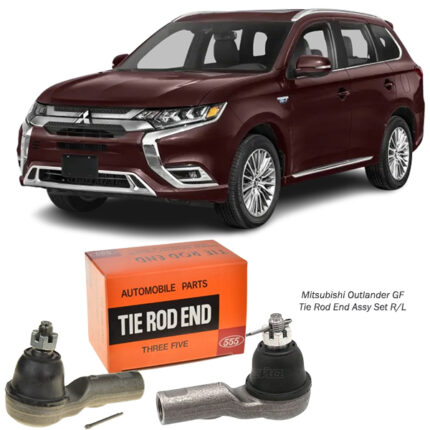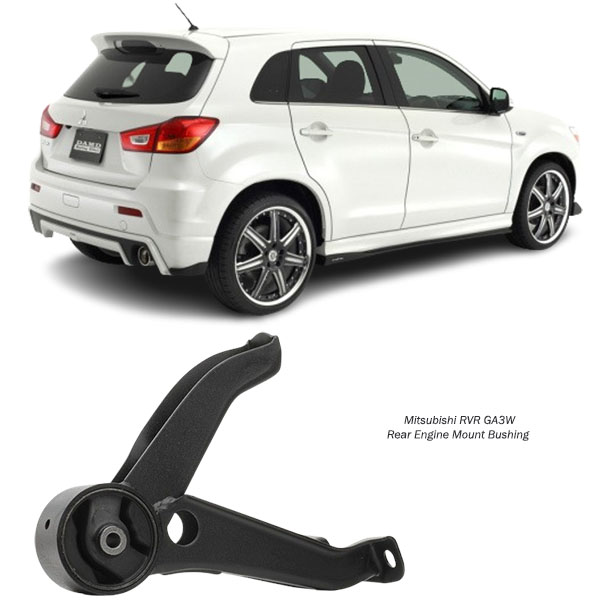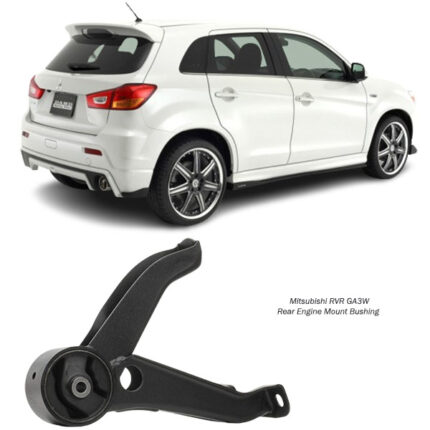Get Mitsubishi RVR Rear Engine Mount Bushing MN184060 in Kenya
The Rear Engine Mount Bushing is a crucial component in a vehicle’s engine mounting system. It plays a significant role in reducing vibrations, absorbing shocks, and ensuring engine stability while the vehicle is in motion. Without a properly functioning rear engine mount bushing, the engine would experience excessive movement, leading to wear and tear on various components.
This guide will cover everything about rear engine mount bushings, including their function, components, types, signs of failure, replacement process, and maintenance tips to keep your vehicle running smoothly.
1. What is a Rear Engine Mount Bushing?
A rear engine mount bushing is a rubber or polyurethane component that is fitted into the rear engine mount. It absorbs vibrations and movement caused by the engine’s operation, ensuring that these forces do not transfer to the chassis or cabin.
Main Functions of a Rear Engine Mount Bushing:
Absorbs engine vibrations and minimizes noise
Prevents excessive engine movement during acceleration and braking
Reduces stress on other engine mounts and drivetrain components
Enhances driving comfort by preventing engine vibrations from entering the cabin
2. Components of a Rear Engine Mount Bushing
A typical rear engine mount bushing consists of the following:
Outer Shell (Metal or Plastic) – Provides a strong structure to hold the bushing in place.
Inner Sleeve – Holds the bolt that secures the bushing to the engine mount bracket.
Rubber or Polyurethane Material – Absorbs shocks and dampens vibrations.
Grease or Lubrication (Optional) – Some bushings come pre-lubricated to reduce friction and extend lifespan.
3. Types of Rear Engine Mount Bushings
There are two main types of engine mount bushings, each with unique properties:
Rubber Engine Mount Bushings
Commonly used in most vehicles
Excellent vibration absorption
Softer and provides a smoother ride
Tends to wear out faster due to exposure to oil, heat, and stress
Polyurethane Engine Mount Bushings
More durable than rubber bushings
Provides better engine stability
Offers firmer performance, ideal for performance or modified vehicles
Slightly increases vibration due to its stiffness
Choosing between rubber and polyurethane bushings depends on your driving needs—rubber for comfort, polyurethane for performance.
4. Signs of a Failing Rear Engine Mount Bushing
Worn-out engine mount bushings can cause noticeable issues in your vehicle. Look out for these warning signs:
Excessive Engine Movement – The engine shifts more than usual during acceleration or braking.
Increased Vibrations – More vibrations felt in the cabin, especially at idle.
Clunking or Thudding Noises – Sounds coming from the engine bay when shifting gears or accelerating.
Misalignment of Engine Components – Hoses, belts, or other engine parts appearing out of place.
Visible Cracks or Wear – Physical damage, such as cracks or gaps in the rubber bushing.
Ignoring these signs can lead to stress on other engine mounts, misalignment of drivetrain components, and increased wear on transmission parts.
5. How to Replace a Rear Engine Mount Bushing
Replacing a rear engine mount bushing requires mechanical expertise and the right tools. Below is a step-by-step guide:
Tools Required:
Jack & Jack Stands
Wrenches & Ratchet Set
Pry Bar
Torque Wrench
Hydraulic Press (for pressing bushings in and out)
Lubricant or Grease (if needed)
Step-by-Step Replacement Process:
Lift the Vehicle – Securely jack up the vehicle to access the engine mount.
Support the Engine – Use an engine support or jack to prevent excessive movement.
Locate the Rear Engine Mount – Identify the mount where the bushing needs replacement.
Remove the Mount Bolts – Use a wrench to loosen and remove the bolts securing the mount.
Extract the Old Bushing – A hydraulic press or a bushing removal tool is needed to push out the worn bushing.
Install the New Bushing – Press the new bushing into place, ensuring it fits snugly.
Reassemble Everything – Reinstall the engine mount, tighten all bolts to the correct torque, and lower the vehicle.
Test Drive – Drive the vehicle to check for vibrations or abnormal movement.
Safety Tip: Always use OEM-specified torque values when tightening bolts to prevent over-tightening or loosening.
6. Maintenance Tips for a Longer Lifespan
Regular maintenance can extend the lifespan of your engine mount bushings and improve vehicle performance.
Inspect Bushings Regularly – Look for cracks, splits, or excessive wear.
Avoid Excessive Engine Load – Aggressive driving or abrupt gear shifts put extra strain on mounts.
Keep Bushings Clean – Dirt, oil, and debris can degrade rubber bushings over time.
Replace in Pairs – If one engine mount or bushing fails, others are likely close to failing as well.
Use Proper Lubrication – If recommended, apply grease to prevent wear and noise.
With proper care, rubber bushings can last 50,000 to 100,000 miles, while polyurethane bushings often last longer.
7. Importance of Engine Mount Bushings in Vehicle Performance
A well-functioning rear engine mount bushing enhances engine stability, smooth operation, and overall vehicle longevity. When worn-out bushings are ignored, it can lead to:
Transmission Wear – Excessive engine movement causes misalignment.
Drivetrain Damage – Unstable engine positioning increases strain on axles and shafts.
Reduced Comfort – Vibrations and noise become more pronounced in the cabin.
Costly Repairs – Ignoring a simple bushing replacement can lead to expensive part failures.
Replacing worn bushings ensures a smoother, quieter, and more controlled ride.
Follow us on Facebook for more parts.




